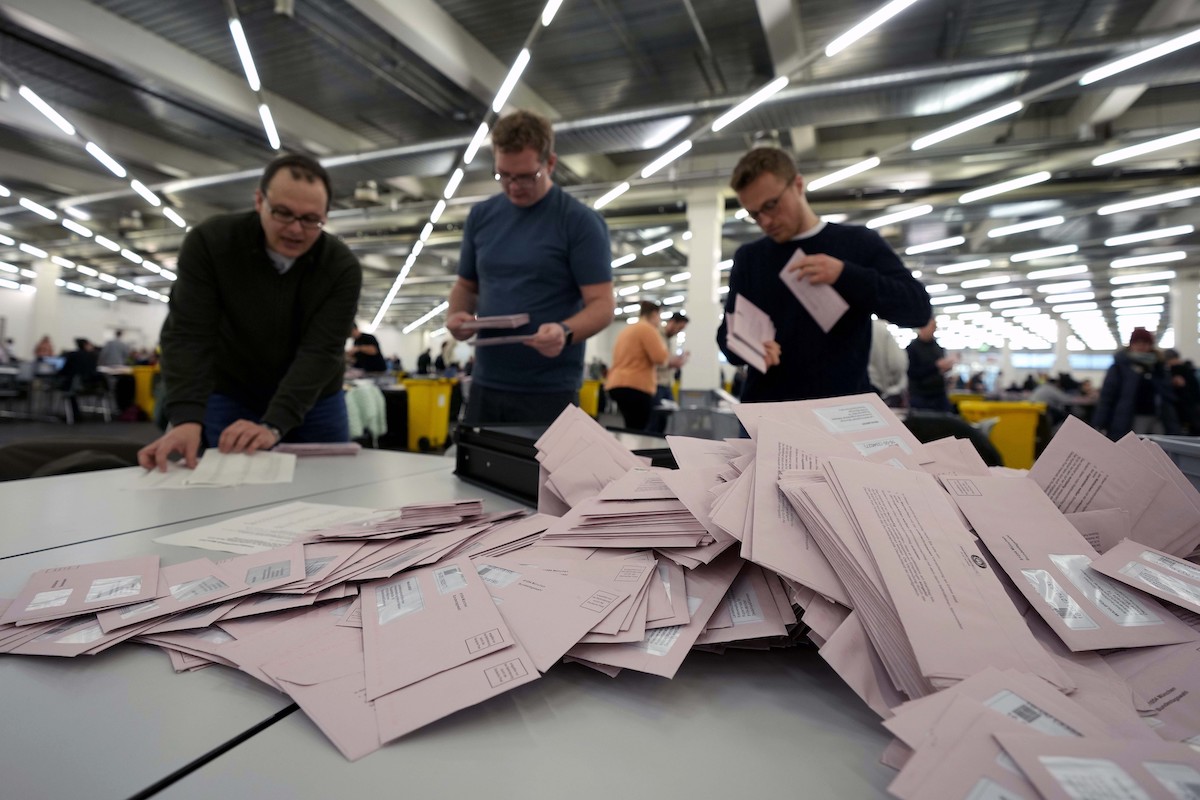Mail-in voting provides more opportunity for fraud than in-person voting researchers say, but it’s still rare, and election officials have safeguards in place.
Trump said during his Aug. 18 White House remarks that his administration is preparing an executive order “to end mail-in ballots because they’re corrupt.”
We asked the White House for evidence to support Trump’s statement about other countries and received no response to that question.
Data compiled by a Sweden-based organization that advocates for democracy globally found in an October 2024 report found that 34 countries or territories allow mail-in voting, which it refers to as “postal voting.”
RELATED: Live fact-checks: Trump meets Zelenskyy to talk potential end to Russia-Ukraine war
Dozens of countries allow at least some mail-in voting
The International Institute for Democracy and Electoral Assistance found that of the 34 countries or territories, 12 allow all voters to vote by mail and in 22 permit only some voters to vote this way.
“Europe has the largest number of countries that make in-country postal voting available to all or some voters,” the report said.
No two countries have exactly the same postal voting system, said Annika Silva-Leander, the organization’s North America head.
Silva-Leander noted some differences:
-
Ballot tracking: Ballot tracking lets voters and election officials track the ballots throughout the voting process to reduce fraud. Although that is common in the U.S., many countries don’t have it.
-
Different state systems: Many countries have the same postal voting system for the entire nation; in the U.S., the system differs from state to state. The majority of states allow voting by mail, including red, blue and battleground states.
-
Mailing ballots to all voters is unusual: In most countries, postal voting supplements polling stations, but some U.S. states such as Washington state rely largely on postal voting.
-
Ballot curing: This is a U.S. process that lets voters fix a problem, such as forgetting to sign the envelope, after casting their ballot. This process is not available in most countries.
The U.S. has had voting by mail since the Civil War. Voting by mail also has a long history across the globe.
Australia introduced postal voting more than a century ago, Graeme Orr, an expert on international electoral law at the University of Queensland in Australia, previously told PolitiFact.
All Canadians are eligible to use mail-in voting, said York University associate professor Cary Wu, who co-wrote a 2024 paper about the effect of Trump’s anti-mail voting messaging on Canadians’ views of mail voting.
“Voting by mail has long been a vital component of the democratic process in Canada,” Wu said.
Although the option of submitting a ballot by mail was extended to all Canadian voters in 1993, it was not commonly used in general elections before the COVID-19 pandemic.
In the United Kingdom, on-demand postal voting in Britain was part of a wider modernization in electoral administration in the early 2000s, according to a 2021 paper by United Kingdom researchers. Postal voting’s expansion was driven largely by a desire to increase turnout. Using data from the 2019 British Election Study, researchers found that older voters and people with disabilities were more likely to opt for postal voting’s convenience.

Volunteers prepare postal votes during the German national election in Munich, Germany, Feb. 23, 2025. (AP)
States set mail-in voting laws
In his Truth Social post, Trump wrote that “the States are merely an ‘agent’ for the Federal Government in counting and tabulating the votes” and must do what the president tells them.
UCLA election law professor Rick Hasen wrote on his blog that Trump’s statement is “wrong and dangerous.”
“The Constitution does not give the President any control over federal elections,” Hasen wrote, adding that federal courts have recognized those limits.
The Constitution’s Article 1, Section 4 says that the regulation of elections is the power of the states.
“The President plays literally no role in elections, and that’s by design of the founders,” said David Becker, executive director of the nonprofit Center for Election Innovation & Research.
Despite often criticizing voting by mail, Trump himself occasionally cast a mail ballot, and in 2024 Trump invited Republicans to cast mail ballots.
We asked the White House for details about the forthcoming executive order he described, including whether it seeks to entirely ban mail-in voting. White House spokesperson Harrison Fields did not address that question but said Trump wants to require voter ID and prevent “cheating through lax and incompetent voting laws in states like California and New York.” There is no evidence of widespread cheating in California and New York, two of the most populous states that consistently elect Democrats for president. Most states require voter ID, although the rules vary.
Our ruling
Trump said, “We are now the only Country in the World that uses Mail-In Voting.”
Trump didn’t explain his evidence and hours later softened his language when he said he “may be wrong.”
In 2024, the International Institute for Democracy and Electoral Assistance found that 34 countries or territories allow postal voting, or mail-in voting. For example, Australia has had mail-in voting for a century, and all Canadians are eligible to vote by mail.
We rate this statement False.
